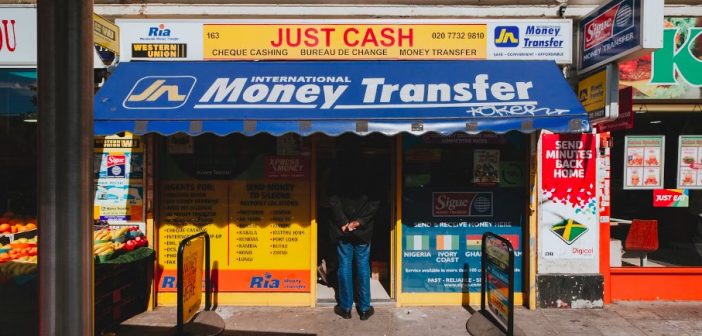Moving funds from one country to another was far from the common person’s conundrum a decade or two ago. Not only has the world moved towards international trade and remote working—even on a micro-market scale—but Singapore specifically is becoming the economic center of the Asia Pacific region. Because of this, it’s never been more important to better understand the costs of salary transfers from that region.
Fees involved for Singaporean transfers
An international bank transfer from Singapore typically uses the SWIFT system. While it was once a very important step towards standardization and security, SWIFT has become a little bit of a burden for those sending regular overseas transfers, such as a salary.
The fees involved will depend on the bank, but there’s often an S$20 base fee, along with a potential handling fee.
Spreads: Are they fees?
What is arguably more damaging to our wallets is not the outright fee, because that we can usually see as clear as day, but rather the spreads involved. This is another way of saying the exchange rate the bank is giving you is not the “real” one, which would be the mid-market rate. The difference between the two is known as the spread. The larger the spread, the more it’s costing you.
The danger lies in not realizing it’s a fee, as many assume the provided exchange rate is correct, or simply accept it as the norm. But, when the spread reaches 2% and above, which it often does, we need to think of this as another fee on top of the base fee above.
Singapore: A hub for money transfers
It cannot be overstated how much money is lost because of these fees and spreads. Not only because they’re high, but because Singapore has an incredibly high volume of international transfers. In 2023, the foreign workforce in Singapore was 1.53 million, which is around a quarter of the population. Many of these will be paying taxes back to their home countries, sending funds to families, existing investments or property.
It’s not just the foreign workforce that is partial to international transfers, but the local Singaporeans too. Overseas investments are very popular, with Singaporeans investing around S$5.2 billion in Q3 2021 on outbound real estate alone.
The blend of expatriate workers and local active investors has turned Singapore into a central node within remittance, particularly for the APAC region. Like its airport, it’s essentially the connecting center of Asia.
How to decide on a money transfer partner
For both workers and businesses looking to save money on their international money transfers, it’s vital to opt for companies that have offices in the APAC region. Knowing the local markets, which are represented by having a physical presence there, is the first green flag for deciding on who to work with.
This excludes simply opting for a local bank, of course. Banks that rely on SWIFT and outdated treasury practices have high administration fees and lengthy transfers. The market for fintech alternatives is booming, as is the currency broker market. Competition is fierce, and fees have come down to near zero.
Immigration2Australia’s top 5 in this space offers a good starting place to compare local companies, as well as tools that help fit your exact needs. Wise and Revolut are on the list, as expected, but there are often more suitable companies when it comes to adding a personal touch, good customer service, or even more complex products like hedging.
Like investing, money transfers can be as simple or as complicated as you want to make it. The goal, however, is to find a company that speaks to exactly where you stand on that scale.
Potential savings of efficient transfers
There are many alternatives to banks, and the difference can be stark. There are four ways you may save money by opting for a brighter, more competent partner:
- Base fee: The base fee that many banks continue to have is minimal with money transfer companies. This could be a cost saving of around S$20 for each transfer.
- Spread: Alternative companies compete on who has the best exchange rate, meanwhile it’s difficult to even gauge what the rate banks are offering. The difference between them can be anywhere from 1-3%, meaning you may save S$30 in a $1,000 transfer.
- Transparency: Beyond large savings potential, it’s the certainty and clarity around money transfer companies that are the real selling point. This has provided the opportunity to compare companies fairly, which has forced them to compete, and allows us to have a better grasp of our costs and cash flow in the future.
- Hedging: Banks offer very few services related to FX. You will need to find a currency broker if you want to hedge or use similarly powerful products. These can save you money in the form of currency risk and fluctuations, meaning you have a guaranteed salary for the next 12 months as opposed to it being essentially a surprise come each month.
How safe is it to avoid banks?
Money transfer services that operate in Singapore are very well regulated to ensure the safety of funds reaching their destination. The Monetary Authority of Singapore (MAS), which is a highly reputable body, oversees these. This allows customers to rest assured that they have high operational integrity and can account for discrepancies, such as their own accounts.
While the operations of these companies are absolutely overseen, it should be noted that the Singapore Deposit Insurance Corporation (SDIC) only insures deposits of up to S$100,000 for banks and not money transfer companies. Banks are regulated above and beyond the typical financial company, so in that sense, nothing beats the security of banks and even SWIFT.
What often gets misunderstood, however, is the idea that there is no safeguarding of your funds. The MAS ensures there are prudent risk management practices to indirectly protect customer funds, and in the event of your provider going under, there still must be an attempt to repay deposits to the extent possible (i.e. it’s not legal to asset strip a company or pay dividends at the time of collapse).
So, money transfer providers are highly safe but are not the ideal place to save large amounts for a long time. But, this is the case anyway, as they do not pay the ~3% savings rate that many Singaporean banks will pay.




